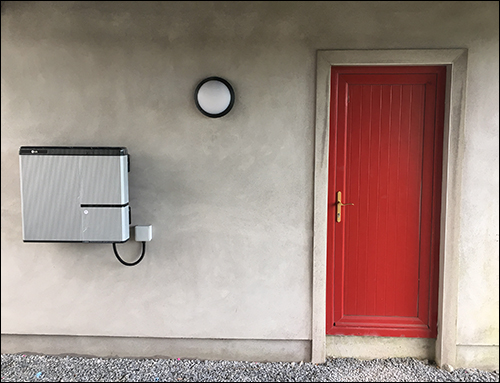As alternative energy sources grow—to capture and distribute power from solar or wind power, or other means—the collection, storage and use of that energy is creating challenges previously faced only by large utility companies. Irish energy storage solutions startup Solo Energy has launched a system using Internet of Things (IoT) technology to manage a network of energy storage units that it supplies to power-generating customers in far-reaching places.
Solo Energy provides its batteries at power-generating sites throughout Ireland and the United Kingdom, and the IoT technology enables Solo to manage the operation of each battery at every site, no matter where it is located. IoT connectivity company Asavie provides the private connectivity, ensuring the batteries are not exposed to the public internet, enabling secure data transfer and remote access capabilities for the Solo Energy cloud-management platform.

Solo Energy was launched in 2015 to deliver energy storage-as-a-service to the renewable energy market. The company delivers and connects batteries at customer sites to store the power they generate, or the power collected from a utility grid, and to then capture and manage data from those batteries via IoT-based sensors. With the system in place, Solo charges its battery-based storage network from the grid during periods of peak renewable generation and low demand—when wholesale electricity market prices are typically lower—and from onsite solar or wind generation, where present.
Whenever wholesale market prices increase, Solo Energy can switch its customers’ power supply to battery-sourced energy, thereby delivering lower-cost electricity during such times. The goal, according to the company, is to help Solo Energy’s customers manage the load on the grid during peak times, thus providing savings to the company and its customers.
Solo Energy’s goal is to attain a 100 percent renewable energy future, explains Liam Breathnach, the company’s CTO. Its customers are power system operators and suppliers, including many renewable energy companies. Central to the system is Solo’s FlexiGrid software platform, which manages all battery storage units in what it calls a Virtual Power Plant (VPP).
With the IoT functionality, Solo’s network captures data regarding energy storage and the health of its entire battery network, which is then managed in a VPP using the FlexiGrid platform. The company has completed several proof-of-concepts and pilot projects to date, and commercial rollouts are expected to take place this year.
“Energy storage technologies have the potential to support and supply a range of services to Ireland’s energy system,” says Liam Breathnach, Solo Energy CTO, “and to support our decarbonization and transition to a low-carbon economy.” Through this process, he adds, storage technologies can aid Irish electricity systems’ integration and improve the management of energy supply versus demand.
The company uses batteries from a variety of suppliers, and delivers and installs them at customer sites. Its customers are typically smaller energy providers, Breathnach says. “We want to enable deployments in remote locations,” he states, which would typically use a single battery to collect and store power for when it’s needed onsite.
Mark Lambe, Asavie’s product marketing manager, says its secure connectivity is ideal for remote location deployments, eliminating what he calls the guesswork to installation at a company’s satellite locations. The bi-directional connectivity not only enables getting data to the cloud easily, but also enables remote access and management of devices wherever they are located.
Solo began working with Asavie about a year ago, Breathnach says. “We’re concerned with security [of data], first and foremost,” he explains, in order to ensure the integrity of data and its secure management on a single platform.
Asavie provides the network connectivity only, employing data from energy meters built into the battery. These meters typically clamp around the relevant cable, such as the photovoltaic generation or home import or export cable, that senses the magnetic fluctuations and converts the value to an AC current reading, Breathnach explains.
The IoT system, Breathnach says—which can utilize a cellular connection or other wireless transmission—offers highly secure, real-time and historic data. For instance, he notes, Solo Energy can provide its customers with data indicating how the system is operating and the power being used, and can pair that information with other factors, such as weather, the time of day or the day of the week.
By the end of 2018, Breathnach reports, Solo Energy intends to have 200 energy storage units deployed across the United Kingdom and Ireland. Through partnerships with retail electricity suppliers, the firm expects its customers to include small business customers as well as domestic energy providers.
“Working with Solo highlights the need for flexibility to integrate global networks through the cloud,” Lambe says. Once the platform is in place, he adds, it should be able “to scale out and scale up to meet demands.”
Solo Energy’s network of batteries, in the long run, is intended to provide services to the Irish or U.K.-based national grid that would otherwise have required the use of traditional power plants, the company reports. In December 2017, for instance, Solo Energy teamed with Electric Ireland and ESB Networks to provide battery stored power to 20 homes in the town of Dingle, in Ireland’s Kerry County. Residents who generated electricity from renewable sources could store the excess energy in the Solo-managed battery, and then use that energy when needed. With the software platform, Solo Energy is able to manage the battery charging and thereby increase the system’s productivity.
Asavie operates a software-as-a-service (SaaS) business model and does not supply hardware, however the company can make recommendations and connect their customer to one of Asavie’s eco-system partners. In the majority of use cases Asavie’s customers usually come with the sensors, “their problem is getting the last mile and cloud connectivity in place. As a value-added service, this is the point at which Asavie provides assistance and expertise,” says Lambe.



